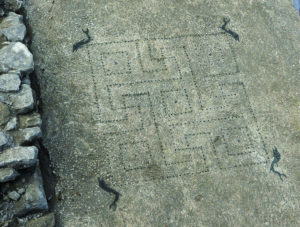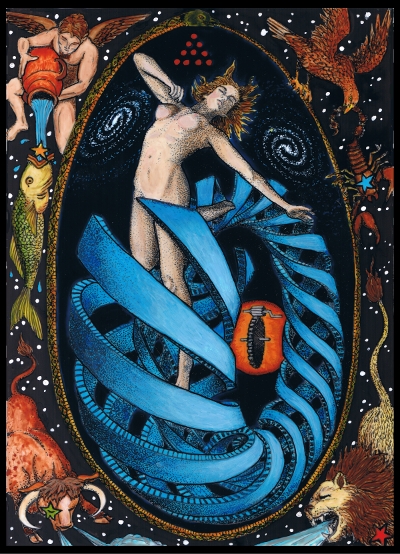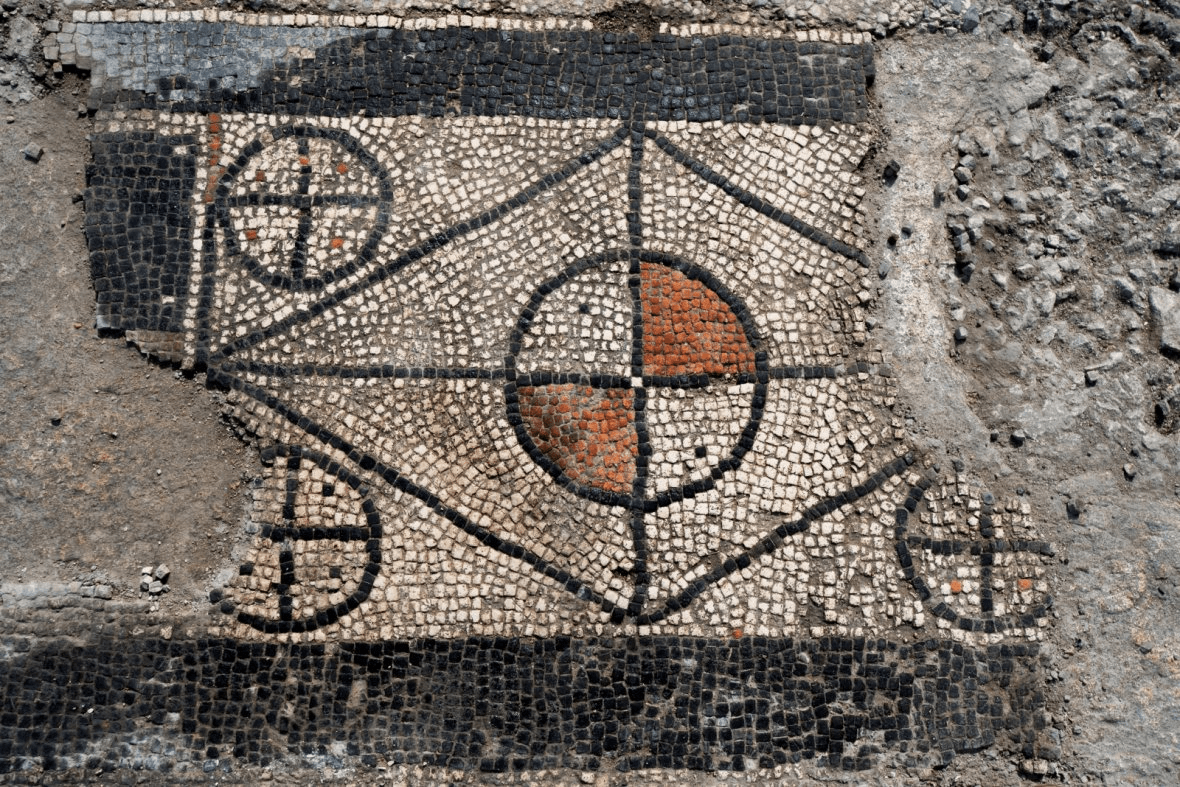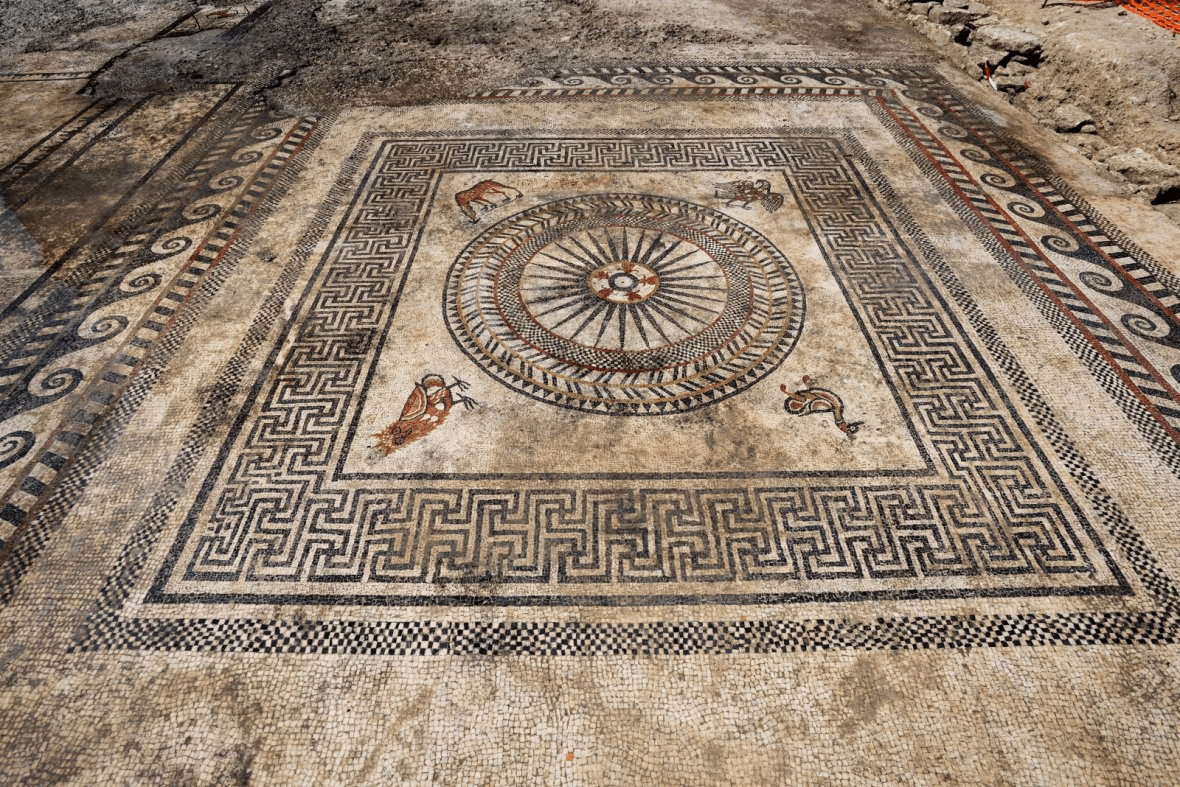Roman mosaic recently discovered in Uzès, France inside what was the ancient and legendary lost city of Ucetia.
I’ve always loved learning about archeological discoveries. Imagine my surprise when I discovered an article on the discovery of a long thought lost Roman city, and saw this mosaic that immediately reminded me of the Tabula Mundi logo, a circled cross symbol of Earth and Malkuth. The first few articles said very little about this particular mosaic, as it was one of the smaller ones in an odd location of the much larger ones. After doing a little digging, I discovered more about what the archeologists think that it may represent.
At least 5 roman roads estimated to be from the beginning of the 1st century BC were excavated at the site, as well as many artifacts. One of the roads goes from east to west and crosses the entire site. It may be the Decumanus Maximus, or main road running from side to side or from gate to gate of a city or military encampment. Near this road and inside the large room where the main and much larger mosaics were discovered, this smaller but very unusual mosaic has been excavated. It is speculated that the circled cross design may indicate the Templum, or center of the town, considered a holy place. When Romans settled camps or towns, they used to draw two paths: a north-south path (Cardo Maximus), crossing an east-west path (Decumanus Maximus). The horizontal line of this mosaic is parallel to the east-west Roman road of this lost city.

Reading a little more about this site, I learned that the mosaics of this lost city were discovered in 2017, but that a part of the site had actually been found in 2013. This was the discovery of a hypocaust, a hollow space under the floor of an ancient Roman building, into which hot air was sent for heating a room or bath. It was surrounded at the four corners by four dolphins. Sadly, it was removed, probably stolen from the site by an unscrupulous subcontractor, probably to sell to someone very rich on the black market. Thus ever the tyrants.
After the 2013 discovery of the hypocaust, a second campaign of excavations was undertaken in 2017, when the beautiful mosaics were discovered. The other larger mosaics discovered at the site are equally enigmatic. The largest mosaic has a central motif that looks to me like a compass rose, though it only has 28 rays rather than 32. At the center, it looks like a sun glyph, surround by five red indeterminate shapes (a five petaled rose?), then the rays outside of that. At the four corners are four creatures. While this makes me think a little bit of the World/Universe card, the four creatures are not the kerubic beasts but rather an owl, a duck, an eagle and a fawn. Well, the eagle is there at least. The curving shapes at the outermost edges at the border are said to be stylized waves.



One thought on “A Roman Mosaic with the circled cross (the Tabula Mundi logo!)”